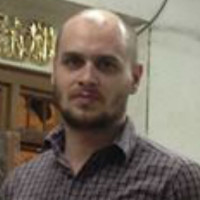
Investigating the murders of the Sinjar Mountains
Riding high on a chain of military successes, the Islamic State group launched its Sinjar offensive in August 2014. What happened next was one of the saddest chapters of Iraq's cruel war.
The area around Sinjar Mountains is the traditional home of Iraq's Yazidi religious and ethnic minority.
Their religion is shrouded in mystery and misunderstanding, making them an obvious target for the fanatical Islamic State group fighters who overran Sinjar's sparse defences.
Fifty thousand Yazidi survivors huddled in the open on the mountains, risking death by starvation, thirst and exposure, rather than hand over their lives to the IS militants.
Hunt for truth
Christoph Wilcke, senior Middle East researcher with Human Rights Watch, has just returned from a fact-finding mission to the town of Sunune, close to the Sinjar Mountains.
His research might help us understand more about what happened in areas like Sunune, close to Sinjar, during IS occupation, before they were liberated in December 2014.
So far, he has documented around 75 bodies who were the likely victims of IS brutality.
"IS didn't bury any of the bodies, they just left them in ditches and in the open, so animals would scatter their bones," he said.
"IS only buried the bodies if they began to smell or they thought the victims' relatives would return to bury them."
The extremists combined a terror campaign with brute force to "cleanse" or enslave the religious minority of Sinjar.
One IS video that HRW reported shows an elderly man, named Salih Barakat. He was pushed in a wheelbarrow by two relatives and clutched a bag of medicine, pleading with the IS fighters to spare him.
| IS didn't bury any of the bodies, they just left them in ditches. - Christoph Wilcke, Human Rights Watch |
Months later and Barakat's fate became clear. Kurdish peshmerga and local Yezidi fighters recaptured the town of Sunune and found three bodies in a ditch along with the wheelbarrow.
One of the worst massacres to take place happened near Sunune, where the bodies of 37 men, women and children were found.
Again IS militants had dumped their bodies in the open and their remains were scavenged by wild animals.
In a final act of degradation, the murderers took the IDs of the deceased to deprive them of a dignified posthumous identitication.
Painstaking DNA testing of their bones will take place, Wilcke says in his dispatches report.
The forensic team is being helped by a young boy from the area who recognised the key to his home which was found among the remains.
The missing pieces
Investigations will be further hindered by the unintentional tampering of the remains by Yazdidi and Kurdish fighters.
Perhaps trying to give the victims some dignity, they collected the multiple bones they found and removed them from the murder sites.
"This makes it almost impossible to ascertain how, when and where the victims were killed, and it can only be hoped that their identities can be retrieved," Wilcke says. This is proving difficult with few experts on the ground.
"For all the moral outrage about what was happening to the Yazidis last year, no country has sent experts to help in the investigation. Nobody has visited," the researcher added.
 |
|
| Click to enlarge |
Shell fire still occassionally hits areas around Sunune, but when peace is restored, HRW hope that a proper investigation into the massacres can take place.
One small gesture of hope the Yazidi can take away with them is that their two holiest sites were spared from the conflict.
One remained in Kurdish hands and the other was heroically defended by Yazidi militias.
A commander of the brigade told Wilcke that his fighters stormed down from the Sinjar Mountains to repel 20 seperate IS assaults on the holy site.
However, although these sites have avoided the fate of so many churches, mosques and shrines that IS have destroyed, many of the militants guilty of horrendous human rights abuses remain free men.
Given that Baghdad is not part of the International Criminal Court, this means that prosecutors will not be able to investigate war crimes. That is, unless Iraq signs the Rome Statute. Some foreign fighters can be prosecuted in their countries of origin.
There is also the problem that contested provinces such as Niniveh, where many of the massacres have taken place, are outside the authority of the state.
The areas might have been liberated by the Peshmerga but they are outside of the territories of the Kurdistan Regional Government, so Erbil's courts have no jurisdiction.
One massacre we know took place in this area was near Mosul Dam, when 23 Yazidis were murdered by IS suspects and their bodies dumped in a lake.
But Wilcke says that it will prove difficult to find culprits to prosecute given the exceptional circumstances of this highly-charged conflict.
"Are there any captive IS fighters?" Wilcke asks. "This is the first war I have seen where there's almost no captured combatants."





 Follow the Middle East's top stories in English at The New Arab on Google News
Follow the Middle East's top stories in English at The New Arab on Google News


